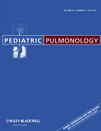Increased incidence of bronchopulmonary fistulas complicating pediatric pneumonia
Abstract
Background
The frequency of complicated pneumococcal disease, including necrotizing pneumonia, has increased over the last decade. During 2008–2009, we noted an increase in the number of children whose empyema was complicated by the development of a bronchopleural fistula and air leak. We studied these children to see if there was an associated cause.
Methods
This was a retrospective case note and database review of children admitted to our tertiary unit with a parapneumonic effusion or empyema from 2002 to 2007, compared with 2008 to 2009. For the latter period, we also compared the outcomes of those with a bronchopleural fistula to those without.
Results
During the 8-year period, 310 children were admitted. In the first 6 years, the frequency of air leaks was 1% (2/258) rising to 33% (16/49) in the last 2 years (P < 0.0001). Three children were excluded as their fistulas were possibly iatrogenic. This was associated with a significant increase in median hospital stay (7 vs. 10 days, P < 0.0001) and surgical intervention rate (2% vs. 14%, P = 0.001). In the latter 2 years, S. pneumoniae serotype 3 was identified in 10/16 (91%) of those with a bronchopleural fistula compared to 1/33 (3%) of those without.
Conclusions
The frequency of bronchopleural fistulas increased markedly in the 2 years 2008–2009. Although these cases were associated with pneumococcal serotype 3 infection, which was not covered by the heptavalent pneumococcal vaccine Prevenar® in use at that time, we do not know whether the increased incidence of fistulas was due to a change in serotype 3 prevalence. Pediatr Pulmonol. 2011; 46:717–721. © 2011 Wiley-Liss, Inc.




